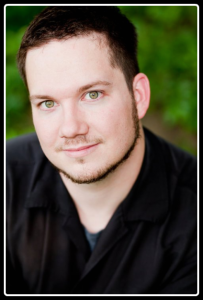 Okay, I’ve been mentioning my Master of Professional Writing program left and right, but I want to say up front that full credit for the information in this week’s and next week’s posts goes to Deborah Chester. She’s the professor teaching my Writing the Novel class, and a lot of these ideas come straight out of her lectures.
Okay, I’ve been mentioning my Master of Professional Writing program left and right, but I want to say up front that full credit for the information in this week’s and next week’s posts goes to Deborah Chester. She’s the professor teaching my Writing the Novel class, and a lot of these ideas come straight out of her lectures.
Next week I’m going to talk to you about “Scene and Sequel,” a concept she first introduced me to back in my Category Fiction class last fall, and one I promised a blog post on way back then. To really get scene and sequel, though, you’ve got to understand her rules for conflict.
Trusting the Technique
Deborah Chester is all about rules-based writing. She likes to say, “Trust the technique.” She considers it the zen of writing. We all get into that swampy middle of the writing process (during NaNoWriMo, we call it “Week 2”), where we totally lose all faith in our stories and our writing ability in general.
Chester’s advice, when that happens, is to trust the technique. Learn it, master it, and when you can’t trust your own judgment, you can at least follow the black-and-white rules, and count on them to bring you safely out the other side.
I don’t want writing to be like that. I want it to be a mystical, inspired art. Somehow that makes me feel more special for getting to have stories. But even as I say that…I believe writing is like that. I believe in the rules. They’re the fundamental promise I made the day I started this blog.
And the story I told about my fantastic writing production even in the grips of la grippe last week…that was all about trusting the technique. That was all about having my ducks in a row well beforehand, and then following through a step-by-step process even when my brain wasn’t working. And it worked.
Setting Up the Scene
So…what are these rules? They’re manifold, but the ones that meant the most to me in my most recent writing escapade were conflict and catastrophe. I’ll start with conflict.
Per Chester, every scene (for a very specific definition of scene, which we’ll get to later) exists as a flurried exchange of stimulus and response (one character speaks or acts, and another character speaks or acts in response, which elicits its own response, and so on). And this stimulus and response is tightly focused around a single conflict. Ideally, it exists between only two characters.
One of these characters is the Scene Protagonist. Often, it’s also the Story Protagonist. (In my recent books, which only have one point-of-view, it’s always the Story Protagonist).
Regardless, the Scene Protagonist starts the scene with a clearly stated goal. There is something he wants — something that can be expressed in a straightforward yes or no question.
- Will he subdue the villain in a fistfight?
- Will he convince the police officer to go along with his daring plan?
- Will he win her heart with a big romantic display?
That’s easy enough. It makes sense. But then the ironclad, black-and-white rules come slamming down. The corollary to the Scene Protagonist with his one, clearly-defined goal, is this:
Every scene has a Scene Antagonist whose goal is precisely the opposite of the Scene Protagonist’s.
That’s your conflict: directly opposing goals.
- It’s the villain who wants to escape unscathed.
- It’s the cop who wants to keep the hero from starting any trouble.
- It’s the girl who would really prefer that this creep just left her alone.
Answering the Scene Question
And there’s a good reason I phrased the protagonist’s goals as yes/no questions. It simplifies the next step.
See…a story is all about progress toward a final goal. But, at the same time, we make that progress by raising the stakes. We make that progress by eliminating options. In other words, stories are kind of unique in that they achieve incredible, heartwrenching progress through the unlikely method of constant setback.
If every scene is built around a yes/no question (will the protagonist achieve his goal), the answer to the question is predetermined.
Unless it’s the very last scene in the book, the answer to the protagonist’s scene question is always “no.”
Simple as that. Well…not really, of course. We spent ninety minutes of lecture one day discussing the nuance. But that’s a fair approximation of it. And not just a “No” most of the time, but a “No, and furthermore….”
Chester’s rule is that every scene ends with a catastrophe. The end of every scene is big and devastating — devastating enough to raise the stakes, to propel the hero to try something he wasn’t willing to try before. Sticking with our quick little trio of examples:
- The villain not only escapes, he knocks the hero unconscious and drags him off to his lair.
- The cop decides the hero is a total loony and throws him in lockup overnight to cool off (risking everything).
- The girl reveals she only agreed to meet with him at all as a chance to present the restraining order.
Catastrophe, on every page! It’s brutal. It’s so mean to these characters we love so much….
Oh, but it works. It works wonders. Come back tomorrow, and I’ll tell you more.





